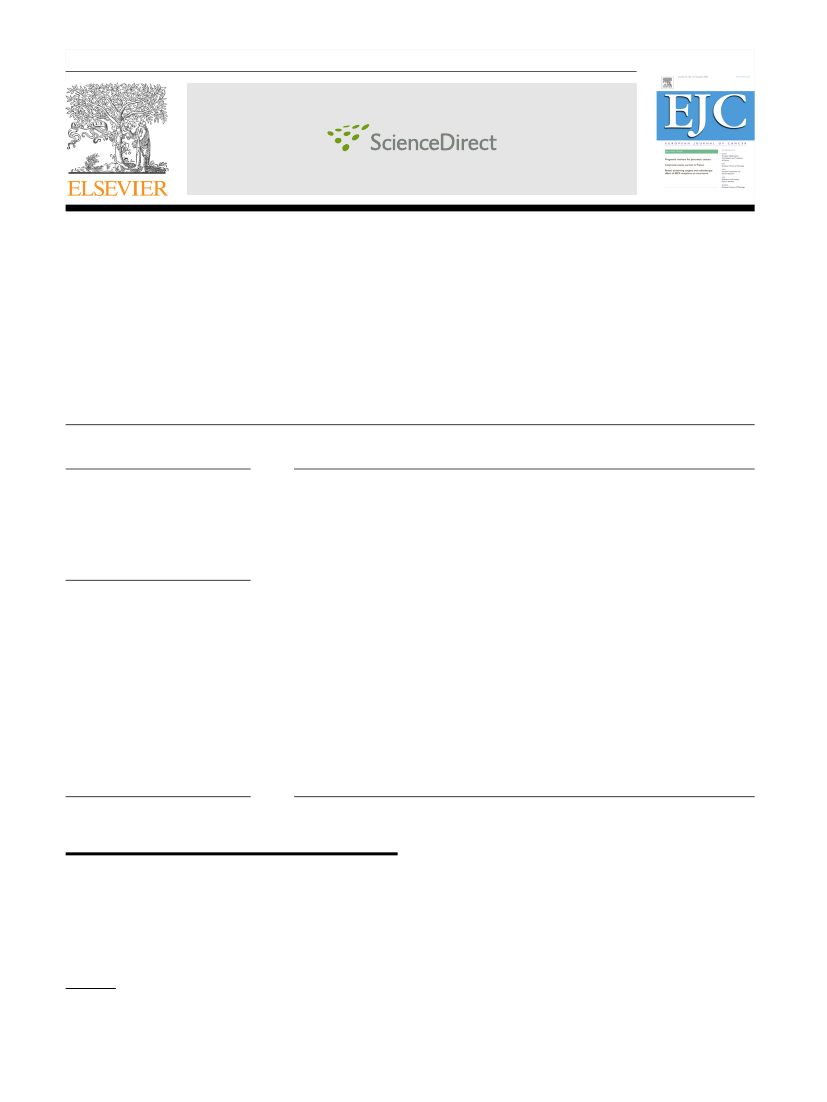
EUROPEAN JOURNAL OF CANCER
4 4 ( 2 0 0 8 ) 2 0 7 4
–
2 0 8 5
available at www.sciencedirect.com
journal homepage: www.ejconline.com
Social inequality in incidence of and survival from cancer
in a population-based study in Denmark, 1994–2003:
Summary of findings
Susanne Oksbjerg Dalton
a,
*
, Joachim Schuz
a
, Gerda Engholm
b
, Christoffer Johansen
a
,
¨
Susanne Kruger Kjær
a
, Marianne Steding-Jessen
a
, Hans H. Storm
b
, Jørgen H. Olsen
a
¨
a
b
Institute of Cancer Epidemiology, Danish Cancer Society, Strandboulevarden 49, DK-2100 Copenhagen Ø, Denmark
Department of Cancer Prevention and Documentation, Danish Cancer Society, Strandboulevarden 49, DK-2100 Copenhagen Ø, Denmark
A R T I C L E I N F O
A B S T R A C T
Article history:
Received 6 June 2008
Received in revised form
10 June 2008
Accepted 16 June 2008
Available online 30 July 2008
Keywords:
Socioeconomic position
Denmark
Incidence
Survival
Cancer
The purpose of this nationwide, population register-based study was to describe variations
in cancer incidence and survival by social position in a social welfare state, Denmark, on
the basis of a range of socioeconomic, demographic and health-related indicators. Our
study population comprised all 3.22 million Danish residents born in 1925–1973 and aged
P30
years, who were followed up for cancer incidence in 1994–2003 and for survival in
1994–2006, yielding 147,973 cancers. The incidence increased with lower education and
income, especially for tobacco- and other lifestyle-related cancers, although for cancers
of the breast and prostate and malignant melanoma the association was inverse. Con-
versely there was a general increase in incidence among early retirement pensioners, per-
sons living in rented housing and those living in the smallest dwellings. Also incidence
rates were generally higher in persons living alone compared to those living with a partner
and in the capital area compared to the rural areas. Social inequality in the prognosis of
most cancers was observed, despite the equal access to health care in Denmark, with
poorer relative survival related to fewer advantages, regardless of how they were measured,
often most pronounced in the first year after diagnosis. Also living alone and having
somatic or psychiatric comorbidity negatively impacted the relative survival after most
cancers. Our study shows that inequalities in cancer incidence and survival must be
addressed in all aspects of public health, with interventions both to reduce incidence
and to prolong survival.
Ó
2008 Elsevier Ltd. All rights reserved.
1.
Background
Socioeconomic position is a commonly used concept in
health research, and general inequalities in health reflect so-
cial inequalities. An extensive review from the late 1990s pro-
vided clear evidence that both cancer incidence and survival
are related to social position, lower social position tending to
be associated with higher cancer incidence and poorer cancer
survival, even if the pattern differs by cancer site.
1
Although
Denmark has an extensive welfare system and equal access
to health care, social inequalities in both incidence of and
survival from some cancers have been observed.
2–4
Socioeconomic position is based on the social and eco-
nomic factors that influence the positions individuals or
*
Corresponding author:
Tel.: +45 35257500; fax: +45 35257731.
E-mail address:
(S.O. Dalton).
0959-8049/$ - see front matter
Ó
2008 Elsevier Ltd. All rights reserved.
doi:10.1016/j.ejca.2008.06.018